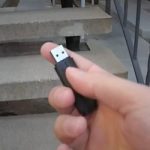If FCC gets its way, we’ll lose a lot more than net neutrality

Enlarge / Net neutrality supporters rally for Title II reclassification of broadband in front of the White House in November 2014. (credit: Stephen Melkisethian)
The Republican-led Federal Communications Commission is preparing to overturn the two-year-old decision that invoked the FCC’s Title II authority in order to impose net neutrality rules. It’s possible the FCC could replace today’s net neutrality rules with a weaker version, or it could decide to scrap net neutrality rules altogether.
Either way, what’s almost certain is that the FCC will eliminate the Title II classification of Internet service providers. And that would have important effects on consumer protection that go beyond the core net neutrality rules that outlaw blocking, throttling, and paid prioritization. Without Title II’s common carrier regulation, the FCC would have less authority to oversee the practices of Internet providers like Comcast, Charter, AT&T, and Verizon. Customers and websites harmed by ISPs would also have fewer recourses, both in front of the FCC and in courts of law.
Title II provisions related to broadband network construction, universal service, competition, network interconnection, and Internet access for disabled people would no longer apply. Rules requiring disclosure of hidden fees and data caps could be overturned, and the FCC would relinquish its role in evaluating whether ISPs can charge competitors for data cap exemptions.
Read 60 remaining paragraphs | Comments


